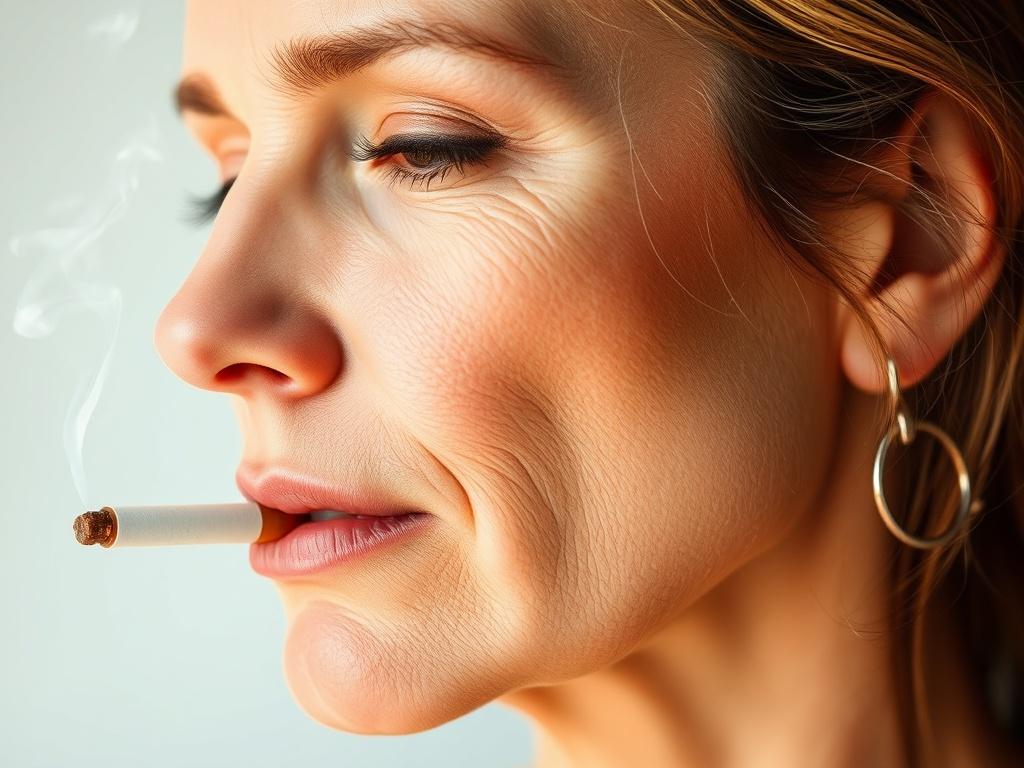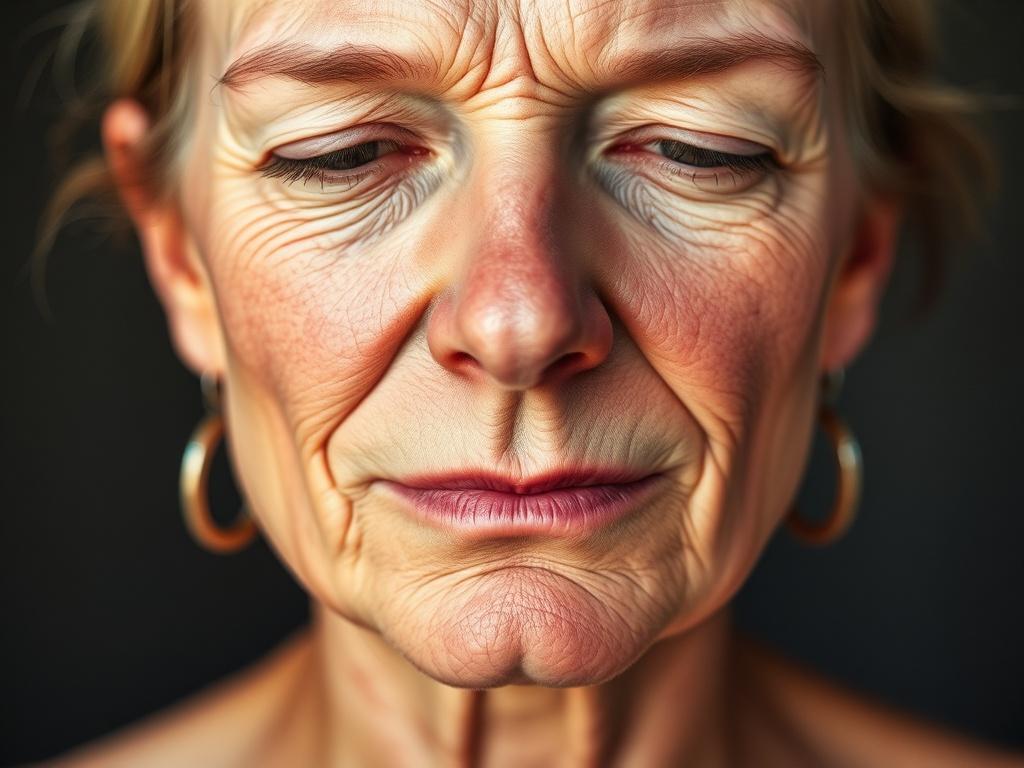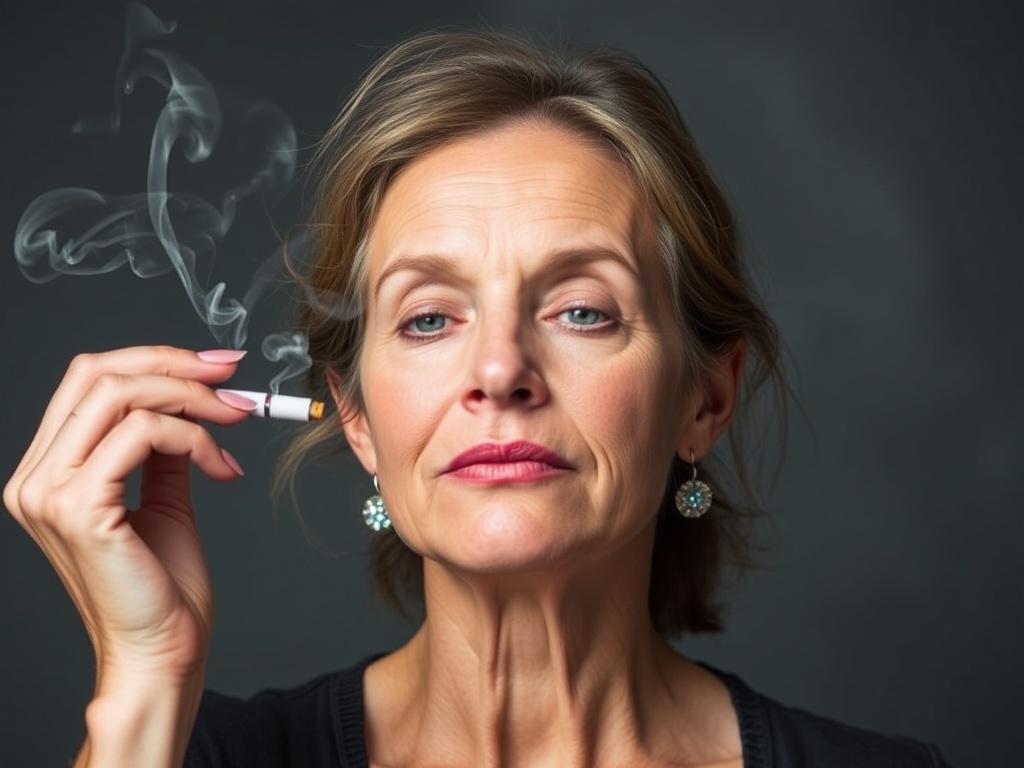Содержание статьи
- 1 How Smoking Impacts Your Skin from the Inside Out
- 2 Visible Signs of Skin Aging Caused by Smoking
- 3 Smoking, Sun Exposure, and Skin Aging: A Dangerous Combination
- 4 Quitting Smoking: Can Your Skin Recover?
- 5 The Psychological Aspect: Why Understanding Skin Aging May Help You Quit
- 6 Debunking Common Myths About Smoking and Skin Aging
- 7 Final Thoughts: The Real Costs of Smoking on Your Skin
Smoking is often talked about in terms of its impact on lung health and heart disease, but one of the less discussed — yet highly visible — effects is how it accelerates skin aging. If you’ve ever wondered why smokers tend to develop more wrinkles or have dull, uneven skin, you’re not alone. The relationship between smoking and skin aging is a fascinating intersection of biology, lifestyle, and environmental damage, and understanding it can motivate positive changes. In this article, we’ll explore the complex ways smoking affects your skin, why it causes premature aging, and what you can do to protect yourself.
How Smoking Impacts Your Skin from the Inside Out
You might think skin aging is only about what you apply on the surface, but in reality, smoking damages the skin from the inside out. When you inhale cigarette smoke, your body absorbs thousands of harmful chemicals. These toxic substances trigger oxidative stress, which leads to the production of free radicals—unstable molecules that damage cells and collagen fibers in your skin.
Collagen is crucial because it provides the skin with structure and elasticity. When collagen breaks down or becomes impaired, your skin loses its ability to bounce back, resulting in sagging and deep wrinkles. Smoking also reduces the amount of oxygen and essential nutrients that your skin cells receive. This happens because nicotine constricts blood vessels, limiting blood flow and making it harder for your body to nourish skin tissues properly.
The Role of Free Radicals and Oxidative Stress
One of the most important concepts when talking about smoking and skin aging is oxidative stress. Simply put, it’s an imbalance between the production of free radicals and the body’s ability to detoxify their harmful effects with antioxidants. Cigarette smoke introduces a high load of free radicals which overwhelm your body’s defenses, accelerating cellular damage.
| Effect | Description | Impact on Skin |
|---|---|---|
| Free Radical Damage | Unstable molecules attack skin cells | Promotes wrinkles and sagging |
| Reduced Collagen Production | Nicotine inhibits collagen synthesis | Leads to loss of skin elasticity |
| Blood Flow Constriction | Nicotine narrows blood vessels | Reduces oxygen and nutrients delivery |
| Inflammation | Smoking triggers inflammatory response | Accelerates skin cell aging and damage |
Visible Signs of Skin Aging Caused by Smoking

The effects of smoking on skin are noticeable, often becoming more apparent as years pass. Smokers tend to show premature lines and wrinkles, which are sometimes referred to as “smoker’s lines.” These vertical lines often appear around the lips because of repeated pursing movements combined with collagen breakdown. But wrinkles are far from the only visible sign.
Common Skin Problems Smokers Face
- Dull, uneven skin tone: Reduced blood flow causes less oxygen and nutrients to reach the outer layers of skin, leading to a lackluster appearance.
- Dry, flaky skin: Smoking depletes essential vitamins like Vitamin A and C, which support skin hydration and repair.
- Thinner skin: Loss of collagen and elastin fibers causes skin to thin, making it more fragile and vulnerable to damage.
- Delayed wound healing: Smoking impairs the body’s natural healing processes, increasing the risk of infections and scarring.
- Uneven pigmentation: Smokers often develop dark spots or hyperpigmentation due to damage from chemicals and UV exposure.
Why Do Smokers Age Faster Than Nonsmokers?
Numerous studies comparing smokers and nonsmokers have shown that the visible signs of aging appear roughly 1.5 to 2 times faster in smokers. This means that a 40-year-old smoker’s skin often looks closer to that of a 60-year-old nonsmoker in terms of wrinkles and texture. The reason lies in the combined effects of toxins, oxygen deprivation, and repeated muscle contractions associated with smoking gestures.
Smoking, Sun Exposure, and Skin Aging: A Dangerous Combination

If you think smoking is bad for your skin on its own, consider what happens when smoking is combined with sun exposure. Ultraviolet (UV) rays from the sun are the most significant environmental factor contributing to skin aging — a process known as photoaging. Smoking intensifies the damage caused by UV exposure by further weakening the skin’s repair mechanisms and increasing inflammation.
How Smoking Amplifies UV Damage
– Smoking reduces Vitamin C levels, which are vital for collagen repair, making it harder for skin to recover from UV damage.
– Free radicals from cigarette smoke and sun exposure act synergistically, causing more extensive DNA damage in skin cells.
– Smokers often have a compromised immune response, meaning their skin is less capable of defending against UV-induced harm.
Because of these overlapping effects, smokers who spend time in the sun without adequate protection are at a much higher risk of premature aging and skin cancers.
Quitting Smoking: Can Your Skin Recover?
One of the most hopeful messages is that quitting smoking can slow down the skin aging process and even lead to improvements in skin appearance over time. While some damage is irreversible — especially deep wrinkles and loss of elasticity — many skin functions begin to normalize once smoking stops.
What Happens to Your Skin After You Quit?
- Improved blood flow: Within days of quitting, circulation improves, increasing oxygen and nutrient delivery to the skin.
- Reduction in free radical damage: Your body’s antioxidant capacity starts to recover, helping to neutralize harmful molecules.
- Enhanced collagen production: Over several months, collagen synthesis can increase, improving firmness and texture.
- Better hydration and tone: Without ongoing oxidative stress, skin becomes more hydrated and regains a healthier glow.
Skin Care Tips for Former Smokers
Quitting smoking is a powerful first step, but supporting your skin with proper care can enhance your results. Here are some helpful tips:
| Tip | Description |
|---|---|
| Use Vitamin C Serums | Vitamin C promotes collagen synthesis and fights free radicals, boosting skin repair. |
| Apply Sunscreen Daily | Protects skin from UV damage, which smokers are more vulnerable to. |
| Hydrate Regularly | Drinking water and using moisturizers help restore skin barrier function. |
| Gentle Exfoliation | Removes dead skin cells and promotes cell turnover for a brighter complexion. |
| Eat Antioxidant-Rich Foods | Fruits, vegetables, and nuts support the body’s natural defenses. |
The Psychological Aspect: Why Understanding Skin Aging May Help You Quit
It might sound surprising, but for many people, visible skin aging becomes a strong motivator to quit smoking. Unlike internal diseases like heart or lung problems, skin damage is easily seen every day in the mirror. This immediate feedback can emotionally connect a person to the consequences of smoking more directly than warning labels or health reports.
Many cessation programs even use “photoaging” tools to show smokers how their skin might look in the future if they continue smoking. This visual approach can inspire behavioral changes by making the risks feel more real and personal.
How Stress and Smoking Create a Vicious Cycle for Skin Health
Interestingly, stress also affects skin aging, and many smokers use cigarettes to deal with stress. However, smoking itself increases oxidative stress and systemic inflammation, which means it worsens the very problem some try to relieve. Understanding this can be helpful for breaking the cycle, as reducing smoking means reducing stress-related skin damage and improving overall well-being.
Debunking Common Myths About Smoking and Skin Aging

There are plenty of misconceptions floating around about smoking and skin health. Let’s clear some of the most common:
- Myth 1: Smoking only causes lung damage, not skin aging. In reality, smoking is one of the top external factors that accelerate skin aging.
- Myth 2: Using skincare products can fully reverse smoking damage. While skincare helps, the best results come from quitting smoking itself.
- Myth 3: Only heavy smokers experience premature skin aging. Even light or social smoking negatively affects skin over time.
- Myth 4: Darker skin tones are not affected by smoking-related skin aging. Smoking affects all skin types, though signs of aging may present differently.
Final Thoughts: The Real Costs of Smoking on Your Skin
Smoking not only harms your internal organs but also makes your skin age faster and appear duller, thinner, and less resilient. The combined effects of toxins, oxygen deprivation, inflammation, and loss of collagen make smokers more prone to wrinkles, uneven pigmentation, and other visible skin problems. While quitting smoking can reverse some of these effects and improve skin health over time, prevention is always better than cure.
If fresh, youthful-looking skin is important to you — and who doesn’t want to look and feel their best — understanding the connection between smoking and skin aging is an essential step toward making healthier choices.
Conclusion
Smoking has a profound and undeniable impact on the aging process of your skin. From disrupting collagen production and blood flow to increasing oxidative stress and inflammation, smoking accelerates the breakdown of key components that keep skin looking youthful and vibrant. Not only does this lead to premature wrinkles and dullness, but it also heightens vulnerability to sun damage and delays wound healing, further compounding the aging effects. The good news is that quitting smoking initiates a positive transformation inside your body that reflects in your skin’s condition over time. However, the best strategy remains prevention — choosing not to smoke preserves your skin’s health and appearance for the long term. By combining cessation with mindful skin care and sun protection, you can restore glow, enhance texture, and slow down the visible signs of aging. Understanding what really happens beneath the surface motivates us to embrace habits that protect and nurture the skin, helping you look as youthful as you feel.

